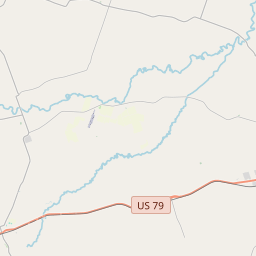International & Great Northern Railroad Passenger Depot
Historical marker location:






Three rail lines largely contributed to Rockdale's early commercial development, and of the three, the International & Great Northern (I&GN) made the biggest impact. This former I&GN passenger depot opened in 1906. It survived various changes to the rail company, including its transition to the Missouri Pacific line in 1956. After years of declining rail use by passengers, the last passenger train left the depot on September 21, 1970, and the building served as storage for many years. Restored at the turn of the 21st century, the depot is eclectic in design with elements of Italianate, Queen Anne and Prairie styles of architecture. Recorded Texas Historic Landmark - 2005
As one of the most visible programs of the Texas Historical Commission (THC), historical markers commemorate diverse topics in Texas history, including: the history and architecture of houses, commercial and public buildings, religious congregations, and military sites; events that changed the course of local and state history; and individuals who have made lasting contributions to the state, community organizations, and businesses.
Texas has been a major oil-producing state for over a century. The first big oil discovery in Texas was the Spindletop field near Beaumont in 1901, which set off a massive oil boom that transformed the state's economy and made Texas one of the wealthiest states in the country.
In 1825, the Mexican government issued land grants in the region, attracting a wave of American immigrants to the area. In 1834, the Mexican government designated Milam County as a separate municipality, and it was named after Benjamin Rush Milam, a prominent Texas revolutionary. After the Texas Revolution in 1836, the region experienced continuous growth and development.
During the mid-19th century, agriculture became the primary industry in Milam County, with cotton being the dominant crop. Many plantations were established, relying on slave labor until the abolition of slavery in 1865. The county also saw the establishment of several small towns, including Cameron, Rockdale, and Buckholts, which served as centers of trade and commerce.
In the late 19th and early 20th centuries, the arrival of the railroad played a significant role in the county's development. The expansion of rail lines allowed for easier transportation of goods and people, boosting the local economy. The county experienced periods of prosperity and setbacks, including the Great Depression, but managed to rebound and adapt to changing economic conditions.
Today, Milam County remains an agricultural hub, known for its production of cotton, corn, and livestock. It is also home to scenic landscapes, historical landmarks, and a vibrant community that values its history and heritage. The county continues to evolve, embracing new opportunities while preserving its cultural roots.
Milam County Timeline
This timeline provides a condensed summary of the historical journey of Milam County, Texas.
- 1824 - Milam County is part of the Mexican state of Coahuila y Tejas
- 1837 - The Republic of Texas establishes Milam County as a separate entity
- 1846 - Milam County is officially part of the state of Texas after the Texas Annexation
- 1860s - Milam County experiences a surge in population and economic growth due to the railroad expansion
- 1874 - Cameron is selected as the county seat of Milam County
- 1940s-1950s - Milam County becomes an important hub for oil and gas production
- 1960s-1970s - Milam County faces economic decline due to the decrease in oil and gas production
- 1990s - Milam County experiences some economic revitalization through tourism and the establishment of new industries